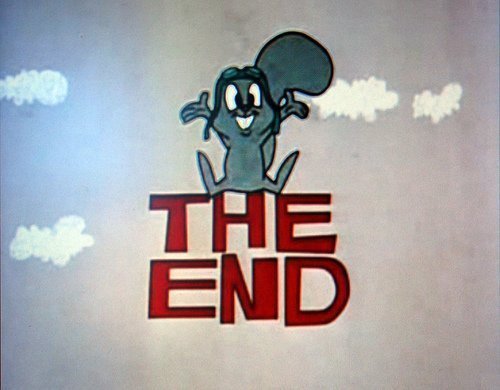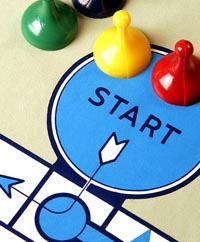
Reflection pt.2 & Complete Version
Continued with my blog 10, I post my complete final reflection here. The first part of reflection is from blog 10, and I revise it a little bit. The new part 2 is all my manifest!

Continued with my blog 10, I post my complete final reflection here. The first part of reflection is from blog 10, and I revise it a little bit. The new part 2 is all my manifest!

Since I met “literacy” in 2011, I know that I am confused about it till now. As a non-native speaker, definitions from dictionary, online sources and all the books I have read so far don’t help a lot as I expected. Reading and talking about literacy in this class help me get rid of the dense fog and I feel I have images about literacy in my mind with reasons.
Depending on how people define literacy, the coverage of literacy can be different. From my understanding, literacy can be anything and the social meaning of literacy is so important that we cannot isolate its social feature. Basically, literacy is the ability of reading and writing. However, considering the social context and function, there are more things included in literacy rather than school literacy. Reading a map, composing the blur for advertisement, reading a sign for driver test, composing a song, reading the instruction how to fill a form, composing a survey… All of these are literacy. From our real life literacy practice, there is no standard for literacy studies and there is no such a rule saying you have to master the rules before you can break the rules. Actually, literacy is moving, developing alive and accumulating.
As Brandt stated, “we must visualize these effects (of accumulating literacy) as developing in two directions—vertically (a pilling up) and horizontally (a spreading out)” (651-652). Pilling up and spreading out explains the interrelation of literacy and other factors such as history, culture, technology, value and people’ believes and so on. Thinking about literacy from a social viewpoint means to think about literacy in a set of relationships. So, from the leaners’ perspective, what they can touch to connect with literacy is a sponsor.
About sponsorship, the book “Words at Work and Play” that I picked for book club tells good stories of sponsors around us. People, activities, materials, communications, culture, etc. are possible sponsors. I like most about this book is the part about play. The differences of play between generations, like games, technology, tools, rules, materials, lead to different academic performance and collaboration of these two generations. In this sense, literacy starts far earlier than school. As a teacher, maybe we should change our thinking about literacy and the curriculum designed for students.
To summarize my learning about literacy, there are a few keywords: social, culture capital, sponsor, accumulating and transformation.

In general, Mojie’s research makes me rethink every decision and judgment I have made about English teaching. As an instructor, what we should do is to listen to students and then make a decision considering of students’ choices. Although Mojie’s research is based on a small group of students, the data from her research does tell the current information about students. For example, as assumed by the majority of people, all of young people are the master of technology stuff; however, there is one interview indicating that there are some students don’t use computer/laptop a lot in their life. When these students are put in college, they are “forced” to learn all kinds of new technologies like learning manage system “Blackboard”, Google Doc, etc, and they have to get used to checking emails frequently and doing research online, etc.
When talking about reading and writing, I found the following quotes very interesting:
The reason why I put these two quotes here is that I think these quotes help correct my misunderstanding of two things. First, reading for pleasure ≠ reading for fun ≠ reading that I like. For students, the entry point can be to read something they like and then we keep the pleasure of reading in school text. Second, assessment can only be one sign to indicate students’ ability. Here, I am questioning “achievement”. Is this “achievement” test scores or reading ability? If “achievement” means test scores, test skills are more important, not the ability to interpret text and reflect on the text.
These two points give me some ideas about curriculum design for ESL students. When facing a challenging unfamiliar area, people need an entry point into the area; same as English. There should be something ESL l students want to explore about English culture and society, and these could be used as the entry point. Students can do their research and start their Fully English reading with help of instructor, and then they can choose their reading or be lead to choose the reading with instructor’s facilitation.

Great job for gaming group and hip-hop group~~ It was great pleasure!
Gaming workshop involved different types of gaming and materials, and the structure of the game was to push people collaborate and work as a group. I hadn’t gone through all the small groups, but I noticed the designing the small group activity involved different learning strategies, visual, listening, written, and the competition pushes participants pay more attention on the activity. Hip-hop workshop took advantage of the information we learned from 21st century literacy workshop, which is also very good. Even though there are similarities between lyric and poem, I have to say they are two genres for me. When we tried to create our new lyrics for hip-hop, we were actually doing creativity composing when applying what we have noticed about lyrics. It is a brand new experience.
The most impressive notice from these two workshops is that we were so engaged in the activities and had great fun. The workshops are showing the application of the theories in real life or a situation close to “real life”. We are not doing a lecture, but playing with the ideas and trying to make them become real. These workshops make me think about the video “Digital Media-new Learners Of The 21st Century” (http://video.pbs.org/video/1797357384/). In the video, there are a couple of examples that students can do a great job in the environment providing them enough criteria, like photography, movie, game design, etc. By doing these things that students are interested in, they have learned more about technology, learning, knowledge they have learned, collaboration, socializing, etc.
As a future teacher, I think these ideas and projects can be used for projects in class, like website design to show a portfolio or the research process on certain area, a song to show personal story, multimodal project to show a presentation, etc. I believe when students realize there are more methods than they thought to help convey themselves, they would like to learn more and learn by themselves, and this could be a circulation that is beneficial for them.